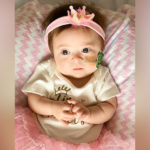Treating vascular rings: Sisters travel more than 3,000 miles for care
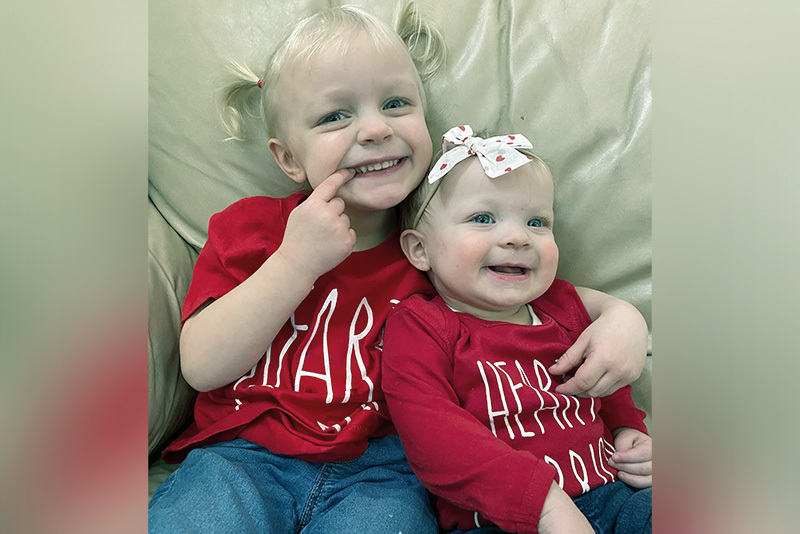
Nicky Dickerhoff is no stranger to caring for children: Not only is she a neonatal nurse practitioner, but she and her husband, Jake, have eight kids themselves. “We’re experienced parents,” she laughs.
So when their daughter Harper briefly stopped breathing at just 3 weeks old, Nicky was skeptical at the initial diagnosis of reflux. Repeated bouts of choking and gasping soon led to Harper being admitted to their local hospital. There, testing revealed that she had an aberrant right subclavian artery — a type of vascular ring in which this artery passes behind the trachea or the esophagus, compressing it.
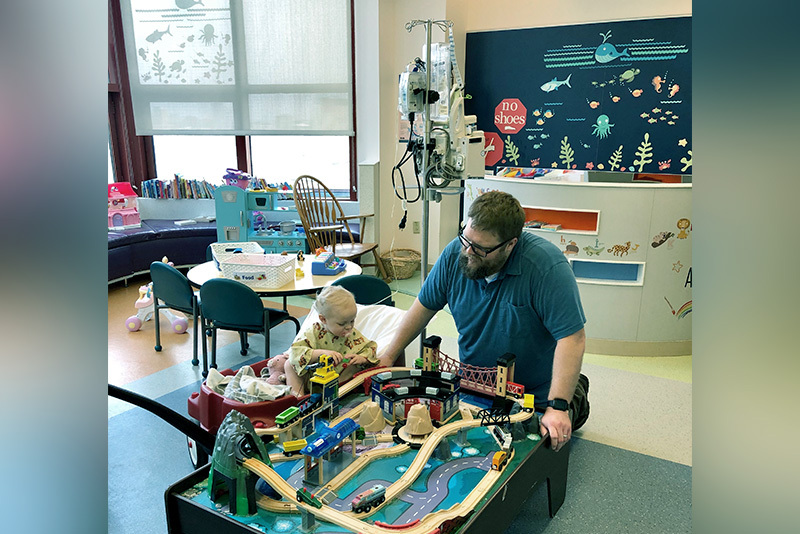
Learning about vascular rings
While some vascular rings don’t cause symptoms, others can lead to chronic breathing and swallowing problems. Still, Harper’s clinicians believed the ring was an incidental finding and advised her parents not to worry about it. “They told me that she would eventually learn what she could and couldn’t eat,” remembers Nicky. “I had an awful image of her choking at her own prom and just broke down. It was so frustrating.”
Although Harper’s physicians reassured the Dickerhoffs that she would grow out of her symptoms, they didn’t improve with time. Indeed, it would take another diagnosis in the family for Harper to receive the care she needed.
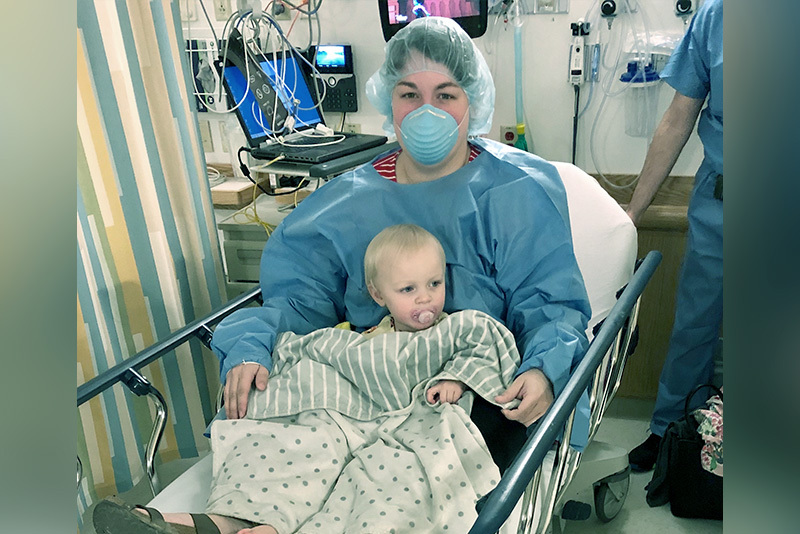
From Alaska to Boston for care
Nicky was 20 weeks pregnant with Harper’s little sister Magnolia when one of her maternal-fetal medicine colleagues suggested she undergo a fetal echocardiogram to confirm that she didn’t have a congenital heart condition too. But the news wasn’t what the Dickerhoffs had hoped: Magnolia also appeared to have a vascular ring. After meeting with several fetal cardiologists, Nicky knew she couldn’t deliver Magnolia in Alaska — although, their physicians there were incredible, they didn’t have the resources to treat severe congenital defects like vascular rings.
Nicky’s research brought her to the team in the Esophageal and Airway Treatment Center at Boston Children’s Hospital. In addition to getting recommendations from other parents, she watched a set of videos from the center which mentioned the right aortic arch. “To hear a doctor explain that was huge for me,” she says.
The prospect of traveling more than 3,000 miles for care — and leaving the rest of her family at home — seemed crazy at first. “I called and spoke with Dori Gallagher and explained that I live in Alaska,” Nicky recalls. “She said that was okay, that the EAT team sees kids from all around the world.”

Help for Magnolia — and Harper
Working with clinicians in the Maternal Fetal Care Center, the EAT team planned for Nicky to deliver Magnolia at nearby Brigham and Women’s Hospital and then return for Magnolia’s surgical repair six months later. They also recommended that Harper come to Boston for evaluation. “The team knew just by hearing about her symptoms that she needed help,” says Nicky. “They were confident, compassionate, and so understanding.”
Yet Magnolia’s surgery came far sooner than expected. When her oxygen levels started decreasing not long after her birth, Nicky requested further testing to make sure that her vascular ring wasn’t to blame. Her instincts were correct: Magnolia’s ring was more severe than expected, with two aortas that wrapped around her esophagus. She needed surgery as soon as possible.
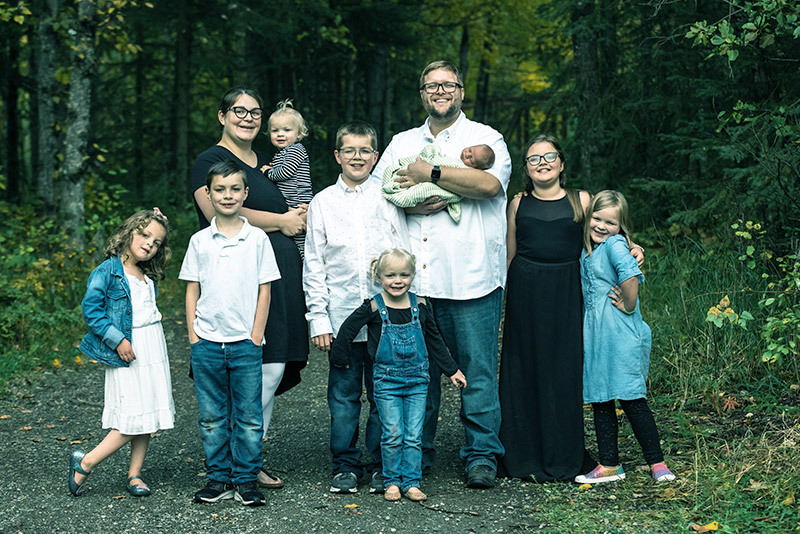
Trusting her instincts
Fortunately, surgery by Dr. Russell Jennings and his colleague, cardiac surgeon Dr. Christopher Baird, was a success. Then, just two weeks later, it was time to help Harper. Although Magnolia’s vascular ring had been more severe, Harper’s procedure was more involved than the team initially anticipated. Her esophagus was covered in scar tissue, a sign that the vascular ring had been causing damage since she was born.
Today, the girls are at different places in their recovery. While Harper is doing great and eating like any other toddler, Magnolia still experiences some aspiration and bouts of pneumonia, which will necessitate future trips to Boston and telehealth visits with the EAT team. It’s a trip that Nicky is willing to make, despite the distance. “I want other parents to know it’s okay to trust your gut,” she says. “Trust your instinct, even when other people are telling you that you’re wrong. I don’t know where our girls would be otherwise.”
Learn more about the Esophageal and Airway Treatment Center.
Related Posts :
-

Five things parents should know about vascular rings
If your child has a high-pitched cough, breathes loudly, wheezes, has difficulty eating or swallowing, or always seems to be ...
-

Devina's story: Minimally invasive Foker process repairs esophageal atresia
Selina De Leon doesn’t have a background in medicine — but she does have experience being a mom. When the ...
-

Noisy breathing? It could be tracheomalacia
DJ is at his pediatrician’s office with his third bout of pneumonia this year. Katie wants to play soccer, ...
-

Knowing what life is worth: I am an adult heart patient and much more
Most of the children showed off a favorite toy. Some brought items that were meaningful to their family or culture. ...



